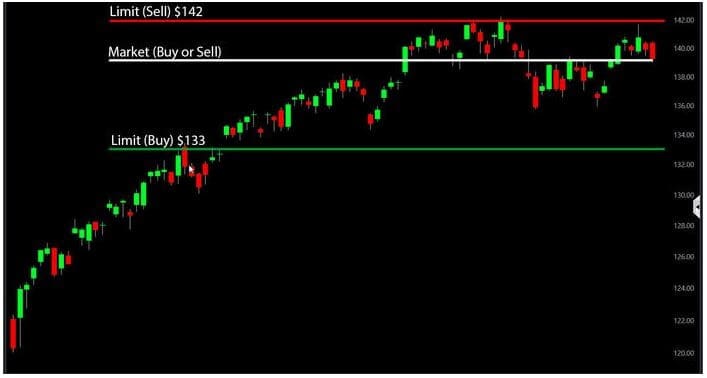3 min read

The limit orders are a type of orders in the stock market that lets traders to sets the wanted price at which they want to buy or sell the stock. In this way, the traders have more control for the execution of price, especially during the volatility. Possibility to specify their own price by using a limit order is a better choice than a market order. By using the market order traders can only choose the price but not to define it.
A limit order can be modified until it is completed.
It is intentionally practiced to get a guaranteed better price. So, it has to be put on the exact side of the market.
Buy and Sell Limit Orders
Buy limit order must be set at a price lower than the current market price. Hence, the sell limit order has to be set at a price higher than the current market price.
For example, you want to buy 100 stocks, but you have a limit of $30 or below. If you want to sell that stocks at $35 that will not happen until the price of $35 is reached or it is more than $35.
A limit order means that you want to sell or buy some stocks only at the price which you put in your limit order.
It differs from a market order because the market order fulfills your buy or sell transaction instantly despite the price. Honestly, sometimes brokers don’t like limit orders. Your limit order will have good treatment only if the price is the best ask or bid price and your stocks will be sold very fast. But, if it is not, well, you will wait to come to the top of your broker’s list.
Some traders believe that limit orders have some defects but the others are convinced they are their best weapon. The most important feature of limit orders is that your order will be executed only at the price you placed, or better.
How to place a trade

Chart Image Source: StreetSmart Edge®
A limit order has five elements buy or sell as the first, number of shares, security, type of order and price.
For instance, if you want to buy 100 shares of stock and you want to pay $35 each. Your limit buy order would be expressed as – Buy 100 shares (ticker symbol should be added) limit $35.
This order indicates the market that you want to buy 100 shares, but without a doubt, you will not pay more than $35 per share.
The benefit of the limit orders is that your order will not be filled above the price you set but the price may drop and you can pay your shares at a cheaper price, lower than $35 as you placed. So, you see, the limit orders are not fixed orders.
The same thing comes for a limit sell order. When you open a limit sell order for $35, your stock will not be traded for less than the amount you set per share. When the stock grows over the set price before your order is fulfilled, you may earn more because the stocks you want to sell reached a higher price before the transaction was executed.
You will need the experience to recognize where to set limit orders. First, never set limit buy order too low. Why is that, you don’t have money? If you do that who will sell you the stock at that too low price? In that case, your order will never be filled.
The point of using limit orders is to protect yourself from buying a stock at too high or selling at a too low price. Keep in your mind, if the stock’s price never meets your limit price, your trade will not be executed.
The limit order could be a problem if you don’t pay attention to the market.
Here is a strategy, not very creative, but works.
Let’s say you placed a sell limit order at $3 over the market price. At the same time, you set a buy limit order at $3 under the market price. You will make a profit in any scenario.
But what if the price jumps for $10 per share?
Sadly, you missed the additional $7. Can you assume the opposite of this situation? The stock fell and your buy limit order was fulfilled as the stock was in a drop.
Limit orders are wonderful tools, but they are not absolutely sure-fire. In a volatile market, limit orders may be painful due to the possibility to be executed too soon.
The best way is to set a limit order that is not connected to daily price changes. The point is to have even minimum control over the price.



Leave a Reply